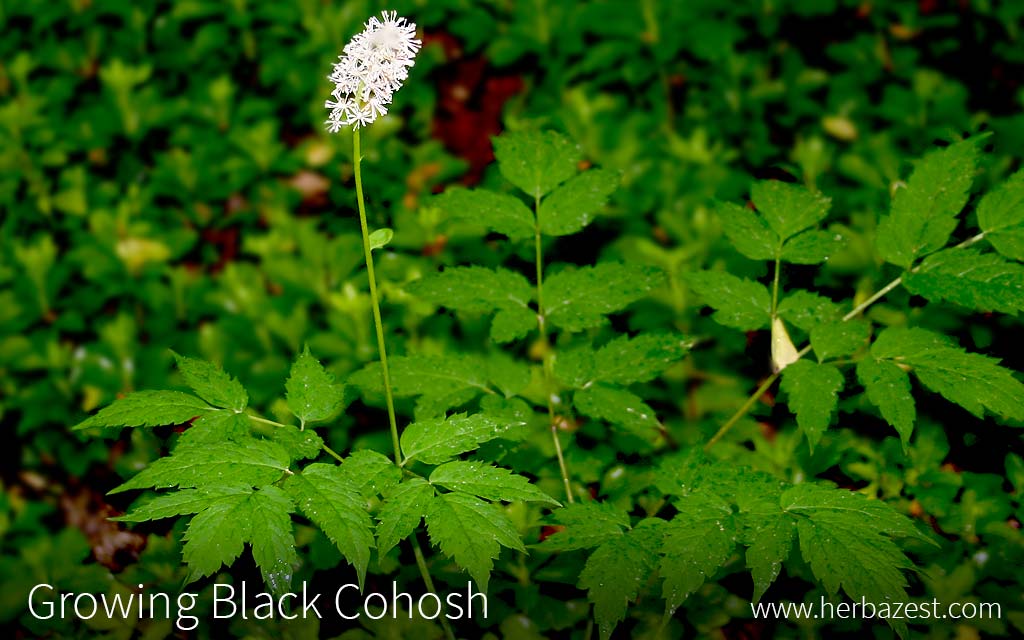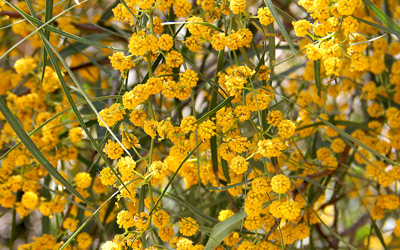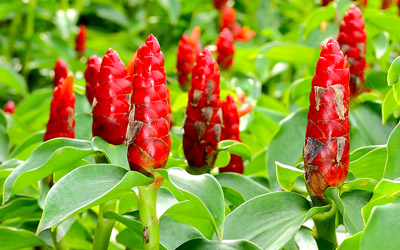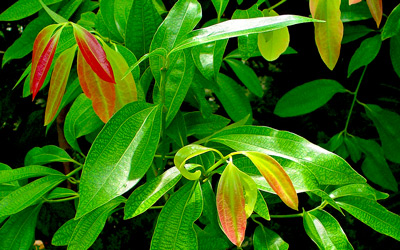Black cohosh is best known for its rhizome, which is useful for treating menopause symptoms, but it also has value as an ornamental plant, because of its luscious foliage and white flowers. It can grow up to eight feet (2.4 m) and is great for attracting pollinators to the garden. These simple growing guidelines will make easier the cultivation of this native American plant.
1. Preparing the Soil
Black cohosh grows best in medium-moisture soils and shaded or partially shaded areas that mimic its original forest habitat. Before planting black cohosh, be sure to choose a rich, moist soil that is acidic and has high levels of organic matter. If black cohosh is cultivated in an exposed area, an artificial shade structure is recommended.
It is advised to test the soil beforehand and, if necessary, amend it with compost or other organic material. In areas with clay soils, it is recommended to plant black cohosh in raised beds in order to improve drainage.
2. Planting
Black cohosh can be propagated from rhizome cuttings and from seed. In the first case, the rhizomes should be divided in the spring or fall. While plants can also be started indoors from seed, planting from rhizomes will typically yield the best results and provide a faster harvest.
To propagate from rhizome divisions, cut the rhizomes into sections that are approximately 2 - 3 inches (5 - 8 cm) in length. If there is fibrous root attached to the rhizome sections, allow it to remain.
Plant the rhizome sections upright, 4 - 6 inches (10 - 15 cm) deep, and covered with two inches (5 cm) of soil. Be sure the rhizome section is upright and there is a spacing of 18 - 24 inches (45 - 61 cm) between plantings.
Black cohosh is a slow-growing plant, and it may take a year or longer for an above-ground shoot to appear. However, the plant will eventually produce many shoots, though it may take up to five years. Leave the seeds and stalks over winter and cut them back in the spring. Because black cohosh grows so slowly, it may never need division, though this procedure is ideal for propagation purposes.
3. Plant Care
Watering
Black cohosh requires consistently moist soil in order to thrive. However, it is important not to overwater it or allow the soil to become waterlogged, as the plant may be prone to root rot and other diseases. Be sure to plant black cohosh in well-draining soil or in an elevated area, such as a raised bed.
Fertilizing
While fertilization is not necessary, since black cohosh prefers rich soil with a lot of organic matter, it is recommended to perform a soil test before planting and amend the soil with compost or composted manure. Moreover, the use of shredded leaves as a groundcover mulch will help to fortify the soil with acid.
Weed Control
To control weeds and conserve soil moisture, mulch the growing area with approximately three inches (8 cm) of hardwood mulch or shredded leaves, continually adding more mulch as needed.
4. Pest & Disease Control
Pests
Some insects that may target black cohosh include cutworms and blister beetles. These insects can be controlled with organic pesticides. Slugs and snails may also chew on black cohosh foliage, but can be controlled by using beer traps or sawdust, eggshell, or copper tape barriers. If the black cohosh plants are being grown in an area that is known for deer, opossum, and rabbits, the installation of fencing or the application of repellents is recommended, as these pests may forage on black cohosh.
Disease
Some common diseases that affect black cohosh include leaf spots and root rot. Leaf spots result in the death of black cohosh foliage but can be prevented by leaving plenty of room between plants, as well as by planting them in areas with good circulation. In the case of detecting leaf spots, all damaged foliage must be collected and destroyed. Additionally, a fungicide can also be applied.
Damping off, a disease characterized by the rot of roots and stems, is often a result of the fungus Rhizoctonia solani, and occurs when the rhizomes have been planted in soil that does not drain well. It can be controlled by planting black cohosh in well-draining soil and alternating it with other crops that are not susceptible to fungi in order to control the number of surviving pathogens in the soil.
5. Harvest
Black cohosh should be harvested in the fall of the fourth or fifth year after planting. At that time, the rhizome and rootlets are hand-dug and air-dried. It is believed that the best time to harvest black cohosh is in the autumn, as the weight of the rhizome and its medicinal properties usually reach their highest potential during this season.
6. Storage
After harvesting black cohosh, it is necessary to remove all soil, sand, rocks, and foreign matter that may be stuck to the rhizomes. Rhizomes can be washed by hand or in a common root washer. Once clean, the roots should be dried whole under low heat with constant airflow. A special herb dryer or food dehydrator may produce better results. Once dried, the rhizomes should be stored in burlap bags or cardboard boxes in a cool, dark, and dry environment. Dried black cohost should be kept no longer than one year.
If the rhizomes were harvested as planting stock, they should be shaken free of any soil, rocks, or foreign material and planted immediately. If the rhizomes are not planted immediately, care should be taken to protect them from the sun to avoid the roots to dry out.
Fresh rhizomes should be stored in mesh or burlap bags with a moist sphagnum moss in a cool environment. It is important to stir the roots occasionally in order to allow ventilation and prevent the growth of fungi.





